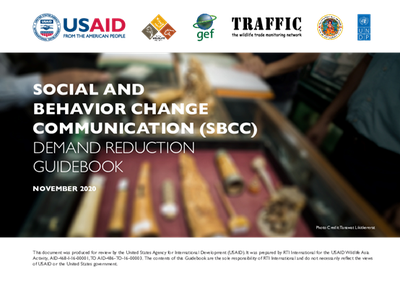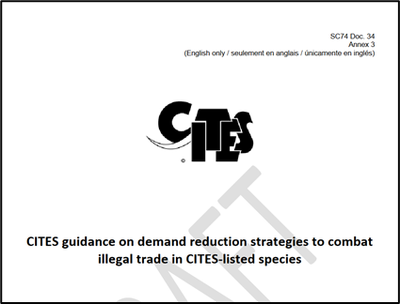USAID’s guidebook and campaign cited as best practice examples in CITES’ guidance for wildlife demand reduction strategies
The CITES Guidance describes how the Beautiful Without Ivory campaign followed the SBCC five-step planning process using consumer research and the SBCC socio-ecological model to analyze the target audience and create an audience profile for ivory product users. It also noted how this campaign systematically identified communication strategies and messengers to reduce demand and change consumers’ perception that ivory products are beautiful. 
USAID’s Reducing Demand for Wildlife activity is promoting and institutionalizing USAID’s SBCC Demand Reduction Guidebook, which is increasingly being adopted and applied across ASEAN as a regional tool. Through the widespread use of sound SBCC strategies, countries in the region can optimize resources to decrease consumption and demand for wildlife products, thus saving endangered wildlife.
The illegal trade in wild animals and plants threaten the survival of many species. The importance of wildlife demand reduction efforts has been recognized at the highest level as a necessary complement to traditional law enforcement approaches focused on anti-poaching and anti-trafficking efforts. CITES has noted the need for “well-targeted, evidence-based, species-specific, country-specific demand-reduction campaigns to more effectively bring about behavior changes”.
Most demand reduction efforts have so far focused on products from high-profile species such as elephant, rhino, tiger, and pangolins. However, illegal trade affects over 7,000 species of wild animals and plants. As outlined in the 2020 UNODC World Wildlife Crime report, rosewoods, agarwood, corals, parrots, raptors, turtles, tortoises and other reptiles, eels, sturgeon, cycads, orchids, and many other CITES-listed species, are all illegally traded in significant quantities and may benefit from demand reduction campaigns.




